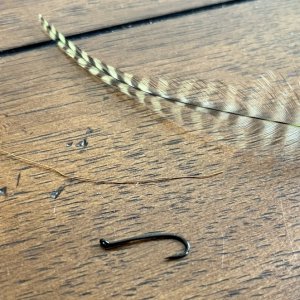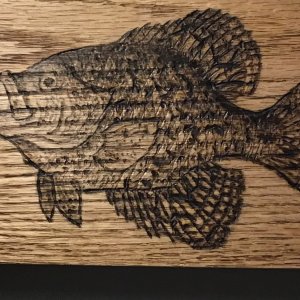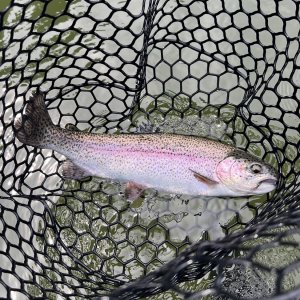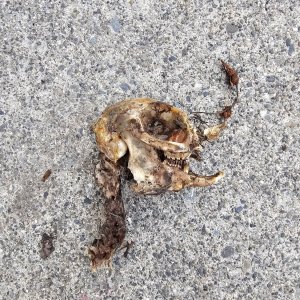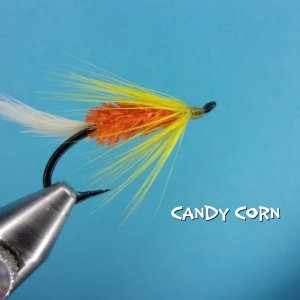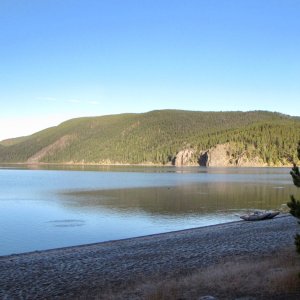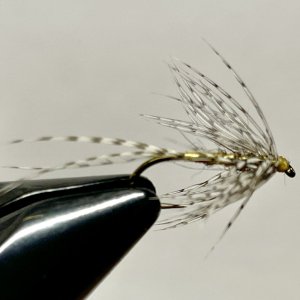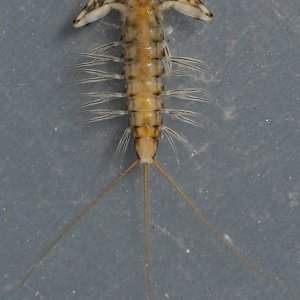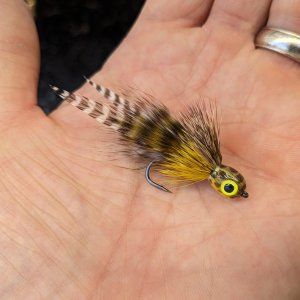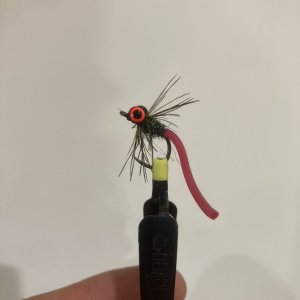I plan tuna trips in January to ensure that I have the dates that I want in the summer. For this year, I decided to pick two days in mid-August and two day in mid/late-September. I place a day between trips (a recovery day), but this plan also means that it is less likely that the same weather system will wipe out both days. My logic for the two months is that the weather is typically better in mid-August. But the opportunities to catch exotics, such as mahi mahi, yellowfin tuna, or bluefin tuna are likely better in September, even if the weather can be more problematic. Of course, as it turns out, the weather gods don’t care anything about January hot-stove logic or the best laid plans.
I had a team ready to go on Sunday, but the forecast that day was for 21+knot winds with gusts to 30mph and seas to 9+ feet. Based on that forecast, the team at All Rivers cancelled the Sunday trip two days earlier. But the forecast for Tuesday looked better with winds to 7-10 knots and seas to 4-5 feet; there was a possibility of drizzle and even thunderstorms. So, we were on.
Predawn Tuesday morning, I had already encountered @Nick Clayton and two of the other team members @Bagman and @Tallguy while messing around in the parking lot. Our final fisher, @adamcu280 joined us as we waited with the folks who would be heading out on the other All River boats at the top of the walkway down to the floating docks. It was still dark, but the pace of activity in the harbor was building.
Soon, it was time to head across the bridge to the floating dock and meet our captain, Chance, and the mate, Tim, at our boat. @Nick Clayton would be along as our fishing supervisor. We passed our gear and rods on board to be stored in the front cuddy for the trip out. After signing the waiver and a safety briefing, we were off the dock, first in the All Rivers fleet. @Bagman and I took our positions on the cushioned storage compartments outside the cabin; everyone else would travel inside. Both he and I know that we can get queasy in rough seas and the outside position is better for minimizing this. It does mean that we occasionally get sprayed by seawater raining down from the cabin roof (even with the spray cover in place over our heads), and sometimes water gushes down the gunnels that are on either side of the cabin. Chance stopped at the bait dock where Tim loaded two scoops of lively anchovies. Then, Chance steered the boat through the marina to the entrance and into the channel leading to the Chehalis River Bar.
We weren’t alone heading out pre-dawn. Many recreational and commercial fishing boats were taking advantage of the weather window. In fact, the All Rivers fleet had been tied up at the dock for the previous 9 days. At this point in a grueling summer, few days of weather cancellations can be a great way to recharge the captains and mates, but the continued cancellations also eroded their incomes. Everyone was chomping at the bit to head out. Now, where would the fish be?
We crossed the Westport bar fairly easily. While there was high fog to the east, we had clear skies overhead. The winds were light and the swell was not too bad. After passing the western edge of the breakwater, Chance set course southwest. We then bombed offshore at close to 20 knots for 2 hours powered by the twin 240hp outboards - my least favorite part of the trip. Fortunately, the swell was not too bad and we didn’t have too many jarring smashes into oncoming waves. Mark in his faster boat (3, 240hp outboards) passed us after about an hour and half.
We ended up 44 nautical miles (50 standard miles) southwest of Westport; we were directly west of the center of the Long Beach Peninsula. As we slowed, we could see Mark’s boat on the horizon, but we also saw encouraging signs of potential tuna closer to home. Groups of pink-footed shearwaters floated on the water or flew from place to place in feeding mode. And we began to see patches of jumping tuna slashing bait at the surface. So, it was time to pull out the rods and start trolling.
I was using a Shock-And-Awe behind my Sage Salt 12 wt. with a Leviathan 500 grain line.
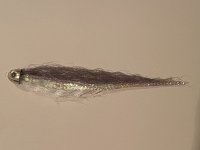
It ended up being a solid match to the saury juveniles that were puked up by some of the albacore. Others selected their fly-du-jour. I stayed with the same fly the whole day, but others switched out as their chosen fly went hot or cold during the day. In the end, there were periods where each fisher held the hot rod, though overall @adamcu280 hooked and boated the most fish using a rod/reel/fly that @Nick Clayton provided, with @Tallguy a close second (though no one was really counting after while).
We trolled at 4-5 knots with two fishers extending their fly rods from the stern corners of the boat and two fishers from the cushioned seats up by the cabin extending their rods laterally. The goal is to space the lines far enough apart to prevent the lines/flies from tangling as we trolled, especially when the boat was turning. And we would do quite a bit of turning early on as Chance maneuvered us from one pod of jumping albacore to the next pod of jumping albacore.
As we trolled through the areas where had seen jumpers, we often picked up one fish on the troll as we passed through each pod. Without warning, someone would call out “fish on” and we would hear line and then backing screaming off the reel. As the boat slowed (the “slide”) with the engine in neutral, those who were not fighting a fish would keep stripping in their line, adding action to their flies. This could elicit a strike by another fish. During the slide, the mate would throw out a handful of live anchovies to entice other albacore to stay near the boat. Once stopped, the anger/s with bent rods and screaming reels fought to recover backing and line; the other anglers would cast their flies out 15 – 30’ from the boat, let the fly sink a bit, and strip the fly back. Rinse and repeat. The mate would periodically throw out a few more anchovies if there were any albacore on the fish finder.
Landing an albacore, especially some brutes (25ish lbs) that we caught, is a battle. Most fish make a blazing initial run that rips off all your fly line off your reel (generally about 100’) and dives deep into your backing (generally another 100’ or more). This is especially true if the fish is hooked on the troll with substantial lengths of fly line off the reel anyway. And this occurs in spite of the drag on the reel set for substantial resistance.
After that first run, the initial battle to bring the fish to the boat is horizontal with the fish at some distance from the boat; on occasion, you will see the fish splashing at the surface in the distance. But as you gain more of the backing and fly line onto the reel, albacore typically dive and the battle becomes more vertical, often with the line going straight down from the rod tip.
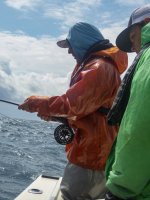
It is here where the albacore uses its massive pectoral fins to advantage. If they can achieve a head-down orientation, those pectoral fins create massive drag that made it so hard to move the fish toward the surface. In my experience, the most successful strategy to shorten the battle is to try to get the head angled up and use continuous short reeling to keep the fish’s head oriented up. Now those long pectoral fins generate lift and help you out.
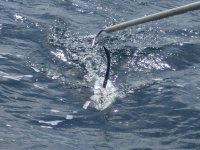
Finally, you have the most of the fly line on your reel and you can see the white/silvery flash of the fish below. We are close to the end game. Occasionally, the sight of the boat will trigger another explosive run by the fish and it pulls out all your fly line off your reel and gets you into the backing again – ugghh. If that doesn’t happen, your goal is reel the fish up to the surface by the side of the boat in range of the mate or captain swinging the gaff (no catch and release on albacore).
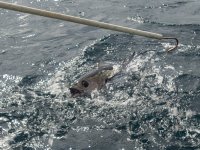
But the fish may decide that it wants to go under the boat. The best-case scenario is that you can take it from one side to the other around the two massive outboard engines in the stern. The worst-case scenario is that you have to take your rod and line and walk the fish around the bow (longer route, harder to maneuver). Ultimately, you really do not have too much control over these fish. When two or more angers fighting separate fish are in the end-game, the two fish may decide to switch sides. There creates a real possibility of flyline origami (we had multiple triples on Tuesday). So, you need to coordinate with the other anglers to go over or under the other rods/lines to prevent lines from wrapping around each other. Or if the lines have wrapped, you need to figure out how to untangle the mess. So, there can be some awkward angler ballet in the stern of the boat. And there may be dead, bleeding tuna that you have to walk around as well. Situational awareness is important.
Finally, you have the fish near the surface but it is typically away from the boat the first time that it breaches – too far away to gaff. The fish is swimming in circles near the surface and you need to guide the fish with enough pressure that its head come close to the surface by the side of the boat. The mate or captain will then try to gaff the fish in the head to minimize damage to the loins. It is trickier with a fly rod versus a bait rod because fly rods are so much longer than a bait rod. But sometimes the fish will dodge at the last minute and may even pull off some fly line. Back to the grind of bringing the fish up to the surface.
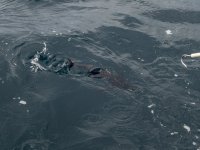
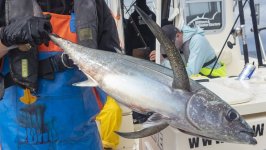
Once gaffed, you want to pull some line off the reel to make it easier to maneuver the fish inside the boat. The hook has to be removed and the gills cut. It is important to bleed tuna to maintain the quality of the meat. The fish may be dumped on the deck while it bleeds out. And tuna have lots of blood to support their active metabolism. And the fish may not yet realize that they are dead and wildly oscillate their caudal fin as if they were in the water. This rat-a-tat-tat sprays blood everywhere, which is why we wear bibs and rain jackets (and waterproof boots).
During gaps in the action, the mate will slide the tuna into the ice-water bath of the starboard or port fish hold. That will cool down the muscle quickly and help preserve the quality of the meat. He will then use a saltwater hose to wash down you, the deck, and anywhere else blood has splattered. It prevents slipping on the deck and keeps everything cleaner, especially the cabin.
Early in the morning, we would pick up a single fish on the troll and maybe a second fish on the slide. We even lost a few after the initial strike as if the fish were “short-striking” the flies and releasing the fly go without being hooked. There wouldn’t be any fish under the boat while the anglers were fighting fish. It was as if the albacore were in small groups dispersed across the surface. So, as soon as the fish were boated, we would go back on the troll. Often, we didn’t go very far before we had more strikes and we were back fighting additional fish.
As the clouds came in, we had a few very productive stops where we might have hooked and landed 2-3 fish on the troll and slide. Because the school stayed near the boat (and would attack live anchovies thrown near the boat), we could then hook up several more casting. Some of these fish were just toads, mid-20 pounders that took quite a while to land. @Tallguy had brought along a jig rod along and landed three fish in the time that it took @adamcu280 to land the largest fish of the day. At one point, two of us were fighting fish while there were already six fish on the back deck.
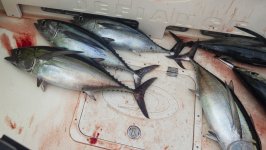
We were there so long that a 4-5’ blue shark cruised by attracted by the blood washed through the scuppers.
By early afternoon, the clouds came in, the winds increased as well. The wind direction did not match the swell direction which made for some sporty seas. And there were squalls in the mix too. At one point, we had three fish hooked up, in gusty winds of a squall and a heavy downpour.
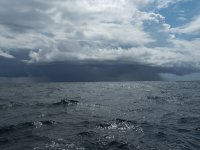
But we toughed it out and landed all three fish.
With the rougher seas, we could not see any jumpers and the fishing did slow. @Tallguy, @adamcu280, and I kept it for a while and picked up a fish or two pretty regularly. We ended up with 33 or 34 fish in the two fish holds (counts vary).
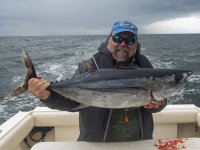
Eventually, we ran out of time. We still had two plus hours of fast travel back to Westport. Tim, the mate, processed all but one of the albacore into loins and bellies; @Tallguy wanted one whole fish.
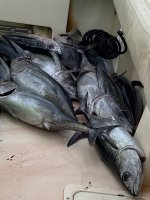
Tim was filleting the fish while the boat is pitching as we bombed back at 20+ knots. He passed the loins and bellies down to me. I packed the loins and bellies from two fish into a heavy plastic bag, tied each bag off, and put each bag on ice in the big cooler. But we got it done and the big cooler would not close... Then, Tim just washed down every surface with seawater from a hose.
Finally, after two hours at full throttle, we were rounding the corner by the outer breakwater at Westport. We reached to dock by 4PM, the last of the All Rivers fleet to return. But we had a great, but challenging day, with great folks. And we had a great catch of fresh tuna.
Steve
I had a team ready to go on Sunday, but the forecast that day was for 21+knot winds with gusts to 30mph and seas to 9+ feet. Based on that forecast, the team at All Rivers cancelled the Sunday trip two days earlier. But the forecast for Tuesday looked better with winds to 7-10 knots and seas to 4-5 feet; there was a possibility of drizzle and even thunderstorms. So, we were on.
Predawn Tuesday morning, I had already encountered @Nick Clayton and two of the other team members @Bagman and @Tallguy while messing around in the parking lot. Our final fisher, @adamcu280 joined us as we waited with the folks who would be heading out on the other All River boats at the top of the walkway down to the floating docks. It was still dark, but the pace of activity in the harbor was building.
Soon, it was time to head across the bridge to the floating dock and meet our captain, Chance, and the mate, Tim, at our boat. @Nick Clayton would be along as our fishing supervisor. We passed our gear and rods on board to be stored in the front cuddy for the trip out. After signing the waiver and a safety briefing, we were off the dock, first in the All Rivers fleet. @Bagman and I took our positions on the cushioned storage compartments outside the cabin; everyone else would travel inside. Both he and I know that we can get queasy in rough seas and the outside position is better for minimizing this. It does mean that we occasionally get sprayed by seawater raining down from the cabin roof (even with the spray cover in place over our heads), and sometimes water gushes down the gunnels that are on either side of the cabin. Chance stopped at the bait dock where Tim loaded two scoops of lively anchovies. Then, Chance steered the boat through the marina to the entrance and into the channel leading to the Chehalis River Bar.
We weren’t alone heading out pre-dawn. Many recreational and commercial fishing boats were taking advantage of the weather window. In fact, the All Rivers fleet had been tied up at the dock for the previous 9 days. At this point in a grueling summer, few days of weather cancellations can be a great way to recharge the captains and mates, but the continued cancellations also eroded their incomes. Everyone was chomping at the bit to head out. Now, where would the fish be?
We crossed the Westport bar fairly easily. While there was high fog to the east, we had clear skies overhead. The winds were light and the swell was not too bad. After passing the western edge of the breakwater, Chance set course southwest. We then bombed offshore at close to 20 knots for 2 hours powered by the twin 240hp outboards - my least favorite part of the trip. Fortunately, the swell was not too bad and we didn’t have too many jarring smashes into oncoming waves. Mark in his faster boat (3, 240hp outboards) passed us after about an hour and half.
We ended up 44 nautical miles (50 standard miles) southwest of Westport; we were directly west of the center of the Long Beach Peninsula. As we slowed, we could see Mark’s boat on the horizon, but we also saw encouraging signs of potential tuna closer to home. Groups of pink-footed shearwaters floated on the water or flew from place to place in feeding mode. And we began to see patches of jumping tuna slashing bait at the surface. So, it was time to pull out the rods and start trolling.
I was using a Shock-And-Awe behind my Sage Salt 12 wt. with a Leviathan 500 grain line.

It ended up being a solid match to the saury juveniles that were puked up by some of the albacore. Others selected their fly-du-jour. I stayed with the same fly the whole day, but others switched out as their chosen fly went hot or cold during the day. In the end, there were periods where each fisher held the hot rod, though overall @adamcu280 hooked and boated the most fish using a rod/reel/fly that @Nick Clayton provided, with @Tallguy a close second (though no one was really counting after while).
We trolled at 4-5 knots with two fishers extending their fly rods from the stern corners of the boat and two fishers from the cushioned seats up by the cabin extending their rods laterally. The goal is to space the lines far enough apart to prevent the lines/flies from tangling as we trolled, especially when the boat was turning. And we would do quite a bit of turning early on as Chance maneuvered us from one pod of jumping albacore to the next pod of jumping albacore.
As we trolled through the areas where had seen jumpers, we often picked up one fish on the troll as we passed through each pod. Without warning, someone would call out “fish on” and we would hear line and then backing screaming off the reel. As the boat slowed (the “slide”) with the engine in neutral, those who were not fighting a fish would keep stripping in their line, adding action to their flies. This could elicit a strike by another fish. During the slide, the mate would throw out a handful of live anchovies to entice other albacore to stay near the boat. Once stopped, the anger/s with bent rods and screaming reels fought to recover backing and line; the other anglers would cast their flies out 15 – 30’ from the boat, let the fly sink a bit, and strip the fly back. Rinse and repeat. The mate would periodically throw out a few more anchovies if there were any albacore on the fish finder.
Landing an albacore, especially some brutes (25ish lbs) that we caught, is a battle. Most fish make a blazing initial run that rips off all your fly line off your reel (generally about 100’) and dives deep into your backing (generally another 100’ or more). This is especially true if the fish is hooked on the troll with substantial lengths of fly line off the reel anyway. And this occurs in spite of the drag on the reel set for substantial resistance.
After that first run, the initial battle to bring the fish to the boat is horizontal with the fish at some distance from the boat; on occasion, you will see the fish splashing at the surface in the distance. But as you gain more of the backing and fly line onto the reel, albacore typically dive and the battle becomes more vertical, often with the line going straight down from the rod tip.

It is here where the albacore uses its massive pectoral fins to advantage. If they can achieve a head-down orientation, those pectoral fins create massive drag that made it so hard to move the fish toward the surface. In my experience, the most successful strategy to shorten the battle is to try to get the head angled up and use continuous short reeling to keep the fish’s head oriented up. Now those long pectoral fins generate lift and help you out.

Finally, you have the most of the fly line on your reel and you can see the white/silvery flash of the fish below. We are close to the end game. Occasionally, the sight of the boat will trigger another explosive run by the fish and it pulls out all your fly line off your reel and gets you into the backing again – ugghh. If that doesn’t happen, your goal is reel the fish up to the surface by the side of the boat in range of the mate or captain swinging the gaff (no catch and release on albacore).

But the fish may decide that it wants to go under the boat. The best-case scenario is that you can take it from one side to the other around the two massive outboard engines in the stern. The worst-case scenario is that you have to take your rod and line and walk the fish around the bow (longer route, harder to maneuver). Ultimately, you really do not have too much control over these fish. When two or more angers fighting separate fish are in the end-game, the two fish may decide to switch sides. There creates a real possibility of flyline origami (we had multiple triples on Tuesday). So, you need to coordinate with the other anglers to go over or under the other rods/lines to prevent lines from wrapping around each other. Or if the lines have wrapped, you need to figure out how to untangle the mess. So, there can be some awkward angler ballet in the stern of the boat. And there may be dead, bleeding tuna that you have to walk around as well. Situational awareness is important.
Finally, you have the fish near the surface but it is typically away from the boat the first time that it breaches – too far away to gaff. The fish is swimming in circles near the surface and you need to guide the fish with enough pressure that its head come close to the surface by the side of the boat. The mate or captain will then try to gaff the fish in the head to minimize damage to the loins. It is trickier with a fly rod versus a bait rod because fly rods are so much longer than a bait rod. But sometimes the fish will dodge at the last minute and may even pull off some fly line. Back to the grind of bringing the fish up to the surface.


Once gaffed, you want to pull some line off the reel to make it easier to maneuver the fish inside the boat. The hook has to be removed and the gills cut. It is important to bleed tuna to maintain the quality of the meat. The fish may be dumped on the deck while it bleeds out. And tuna have lots of blood to support their active metabolism. And the fish may not yet realize that they are dead and wildly oscillate their caudal fin as if they were in the water. This rat-a-tat-tat sprays blood everywhere, which is why we wear bibs and rain jackets (and waterproof boots).
During gaps in the action, the mate will slide the tuna into the ice-water bath of the starboard or port fish hold. That will cool down the muscle quickly and help preserve the quality of the meat. He will then use a saltwater hose to wash down you, the deck, and anywhere else blood has splattered. It prevents slipping on the deck and keeps everything cleaner, especially the cabin.
Early in the morning, we would pick up a single fish on the troll and maybe a second fish on the slide. We even lost a few after the initial strike as if the fish were “short-striking” the flies and releasing the fly go without being hooked. There wouldn’t be any fish under the boat while the anglers were fighting fish. It was as if the albacore were in small groups dispersed across the surface. So, as soon as the fish were boated, we would go back on the troll. Often, we didn’t go very far before we had more strikes and we were back fighting additional fish.
As the clouds came in, we had a few very productive stops where we might have hooked and landed 2-3 fish on the troll and slide. Because the school stayed near the boat (and would attack live anchovies thrown near the boat), we could then hook up several more casting. Some of these fish were just toads, mid-20 pounders that took quite a while to land. @Tallguy had brought along a jig rod along and landed three fish in the time that it took @adamcu280 to land the largest fish of the day. At one point, two of us were fighting fish while there were already six fish on the back deck.

We were there so long that a 4-5’ blue shark cruised by attracted by the blood washed through the scuppers.
By early afternoon, the clouds came in, the winds increased as well. The wind direction did not match the swell direction which made for some sporty seas. And there were squalls in the mix too. At one point, we had three fish hooked up, in gusty winds of a squall and a heavy downpour.

But we toughed it out and landed all three fish.
With the rougher seas, we could not see any jumpers and the fishing did slow. @Tallguy, @adamcu280, and I kept it for a while and picked up a fish or two pretty regularly. We ended up with 33 or 34 fish in the two fish holds (counts vary).

Eventually, we ran out of time. We still had two plus hours of fast travel back to Westport. Tim, the mate, processed all but one of the albacore into loins and bellies; @Tallguy wanted one whole fish.

Tim was filleting the fish while the boat is pitching as we bombed back at 20+ knots. He passed the loins and bellies down to me. I packed the loins and bellies from two fish into a heavy plastic bag, tied each bag off, and put each bag on ice in the big cooler. But we got it done and the big cooler would not close... Then, Tim just washed down every surface with seawater from a hose.
Finally, after two hours at full throttle, we were rounding the corner by the outer breakwater at Westport. We reached to dock by 4PM, the last of the All Rivers fleet to return. But we had a great, but challenging day, with great folks. And we had a great catch of fresh tuna.
Steve
Last edited:

